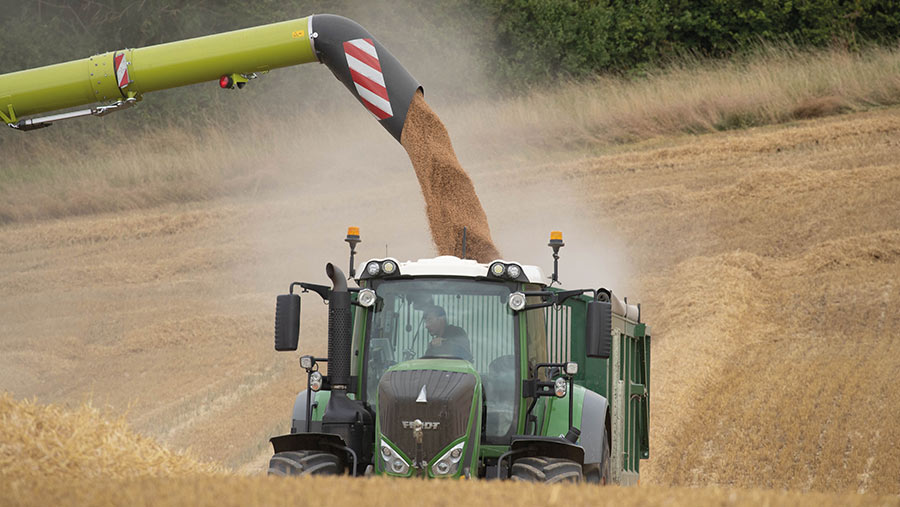Why grain analysis now could save on fertiliser next season
 © Tim Scrivener
© Tim Scrivener Farmers are being advised to get their grain analysed this harvest to help refine next season’s fertiliser decisions, with data showing the average uncertainty equates to £2,000 for an average field.
With fertiliser prices remaining high and grain prices still rising, crop physiologists at Adas say farmers can no longer afford to “guesstimate” crop nutrition.
See also: Tips on how arable farms can manage risk next season
They are, therefore, urging farmers to measure their fertiliser performance with grain analysis and benchmarking.
“The 2022 price hikes for both fertilisers and grains have massively increased the importance of getting nutrition right field by field,” says Roger Sylvester-Bradley, head of crop performance at Adas.
Crops primarily require nutrients through April and May when leaf canopies are expanding, and again for high-yielding crops through June and July to feed grain nutrient storage.
Farmers will need to have established soil supplies or applied extra nutrients in advance of these periods, maybe supported by soil and leaf analysis.
The best time to assess nutritional success is at harvest with grain analysis, which can measure final nutrient capture by each crop and identify if extra nutrition was worth the spend.
Adas’ grain analysis and benchmarking service YEN Nutrition has identified that farms often differ in their nutritional success.
Most crops submitted for analysis after harvest 2021 – more than 80% – had nutritional concerns, with management either being overly generous or consistently stingy with each of the 12 essential nutrients.
Dry spring
Sub-optimal levels of nitrogen, sulphur and manganese were evident across the crop samples, leading Adas crop physiologists to conclude that the dry spring conditions of 2021 may have limited the crops’ ability to absorb adequate nutrition.
Grain phosphorus and potassium, on the other hand, were found to be variable and mainly less than assumed in RB209 (5.5 kg/t K2O).
It can be estimated that farms with land needing maintenance dressings (soil with a P and K index of less than 3) benefited by £100 for an average 10ha field in 2021. At current 2022 prices, that benefit rises to £350.
Farm-to-farm variability
Through benchmarking, it was clear that farm-to-farm differences were significant for N, P and K concentrations in grain, as well as for grain yield.
Surprisingly, little variation in grain nutrients was explained by soil analysis (pH, P, K, Mg), showing how important grain analysis is for telling growers the whole story of how their crop and soil management affects their crop’s ability to capture each nutrient.
Grain analysis can now identify whether any particular nutrient was a limiting factor in any crop, and benchmarking can show what the causes were.
Prof Sylvester-Bradley believes putting these together could now transform most farms’ confidence in profitable crop nutrition.
“We estimate that average financial uncertainties in fertiliser decisions are now around £2,000 per field.
“But you can’t manage, or improve, what you don’t measure and compare. So why not check whether fertilisers have worked?”
Case study: Sherwood Farms
One farming father-and-son team has benefited from grain analysis and made changes to applications of one key micronutrient.
James and Michael Parker farm 630ha at Sherwood Farms, with cropping including winter wheat, spring barley, winter and spring beans, winter triticale, spring linseed and lupins.
They have been taking part in the YEN grain analysis and the results have led directly to changes in nutrition strategy, with a more targeted use of manganese.
“We have changed our manganese doses to match crop needs,” says James. “We have moved to making field-by-field decisions instead of a blanket approach.”

